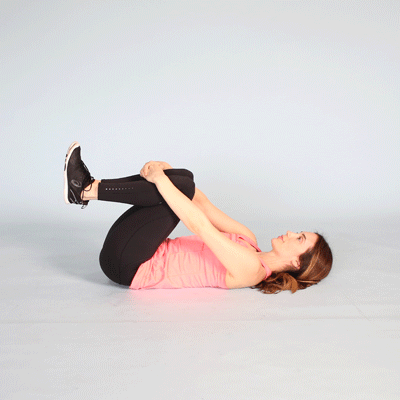People should stretch after every run while the muscles are still warm and hold each stretch for 10–30 seconds. It is helpful to focus on breathing in and out throughout the stretch.
Stretches should not cause pain, and a person should stop the stretch immediately if they are finding it painful. In most cases, it is possible to modify a stretch to tailor it to the individual’s level of flexibility.
In this article, learn about which stretches are best for runners by muscle group.
1. The knee hug
According to the National Institute of Neurological Disorders and Stroke, up to 80% of adults experience lower back pain during their lifetime.
Causes of lower back pain include heavy lifting and prolonged sitting, but poor recovery after running can also lead to back problems.
The knee hug can stretch out the back muscles and relieve tension.
To do this stretch:
- Lie down on a mat with the back flat on the floor.
- Slowly bend the knees and bring them in close to the chest.
- Grasp the shins, pulling them in gently, and hold for 30 seconds.
- Slowly lower the legs back down to the floor.
2. Child’s Pose
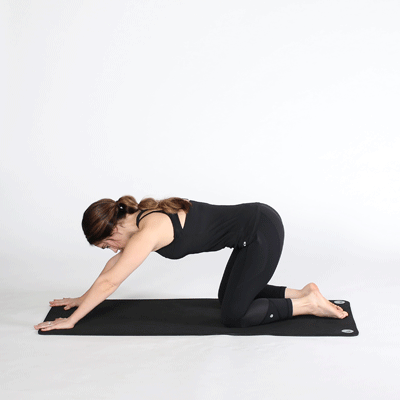
This pose stretches the muscles in the back of the torso and the shoulders. To do Child’s Pose:
- Kneel on a mat with the toes pointed behind the body and the buttocks resting on the back of the feet.
- Bend forward at the waist and slowly lower the chest down to the knees.
- Stretch the arms above the head. The hands should be flat on the mat, and the elbows should be straight.
- Gently reach forward and hold for 30 seconds.
- Bring the arms back in and slowly sit up.
3. Kneeling hip flexor stretch
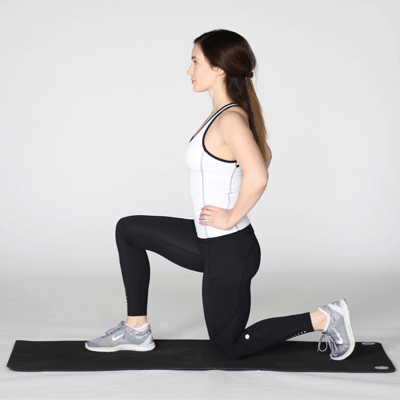
The hip flexors are the group of muscles in the area where the thighs meet the torso. Tight hip flexors can cause hip and lower back pain, especially in runners.
Due to the role that they play in lifting the legs, tight hips can interfere with a runner’s progress. Extended periods sitting at a desk or in a car can also contribute to tightness in the hip flexors.
To do a kneeling hip flexor stretch, follow these instructions:
- From a standing position, slide the right foot behind the body and drop down to the right knee.
- Rest both hands on the left knee.
- Gently lean the body forward and straighten the right hip.
- Hold for 30 seconds.
- Pull the right foot back in toward the body and stand up. Switch legs and repeat.
4. Standing quad stretch
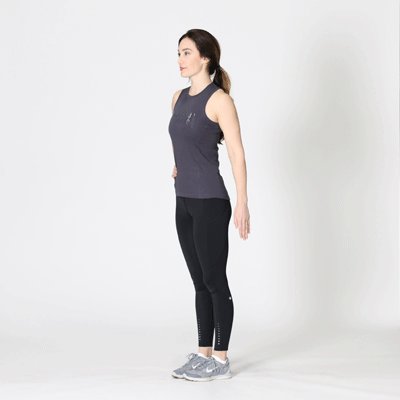
The quadriceps or “quads” are the muscles in the front of the thigh. Without proper stretching, activities such as running and biking can cause tight quads.
When these muscles become tense and tight, they can lead to misalignment in the hips and back, which can result in pain. The quadriceps also help support the knee, so having strong and flexible quads can help alleviate knee pain.
To do a standing quad stretch, a person should:
- Stand up straight with the feet hip-width apart. If necessary, put the left hand on a wall or sturdy object for balance.
- Bend the right knee and bring the right foot up behind the body toward the buttocks.
- Grab the right foot with the right hand.
- Keep the right knee pointed toward the floor and gently push the hips forward very slightly, keeping the knees and thighs together.
- Hold for 30 seconds and then switch legs.
5. Seated hamstring stretch
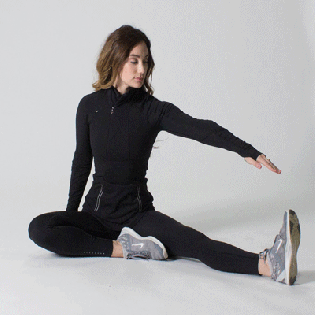
The hamstrings are the large muscles that run up the back of the thighs. They connect to the hip flexors, gluteal muscles, and calves.
When the hamstrings are tight, this can lead to lower back and knee pain. Having flexible hamstrings is important for overall mobility when running.
To do a seated hamstring stretch:
- Sit on the floor with the right leg extended and the left leg bent with the knee on the floor. The left foot should rest on the inside of the right thigh.
- Bend forward at the waist, keeping the back straight.
- Hold onto the right foot, ankle, or lower leg (depending on flexibility), feeling the stretch in the back of the leg.
- Hold the position for 30 seconds.
- Return to a sitting position and repeat on the other leg.
6. Toe touch
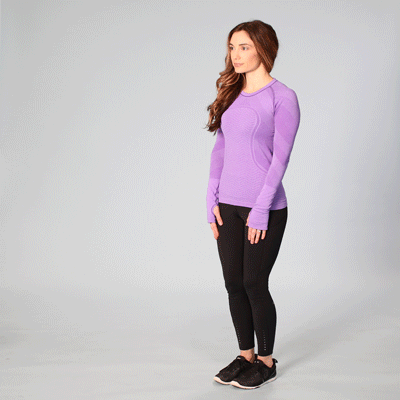
This stretch can also improve the flexibility of the hamstrings.
To do a toe touch, a person can:
- Stand with the feet together or shoulder-width apart.
- Keep the knees straight but not locked.
- Bending at the hips, slowly lower the head down toward the knees, keeping the back as straight as possible.
- Reach the fingers toward the toes, and let the neck relax.
- Hold for up to 30 seconds.
- Rise slowly back up to standing.
7. The wall push
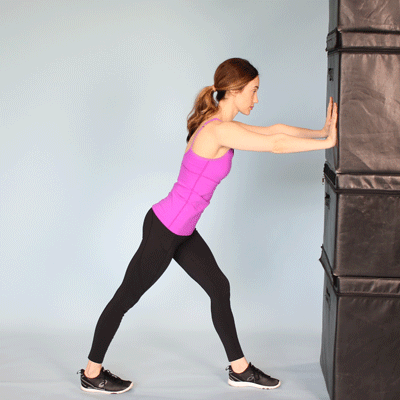
Running without stretching can lead to tight calves. Tight calves can create heel pain due to plantar fasciitis. Many athletes also know the pain of a muscle spasm, or “Charley horse,” in the calf due to tight muscles in this part of the body. To stretch out tight calves after a run:
- Face a wall, standing about an arm’s length away from it.
- Put both hands on the wall at shoulder height.
- Take a large step backward with the right foot. Keep the back straight.
- Press the hands into the wall and both heels into the floor.
- Feel the stretch in the right calf.
- Hold for 30 seconds.
- Bring the right foot back in toward the body, switch sides, and repeat.
8. Downward Dog
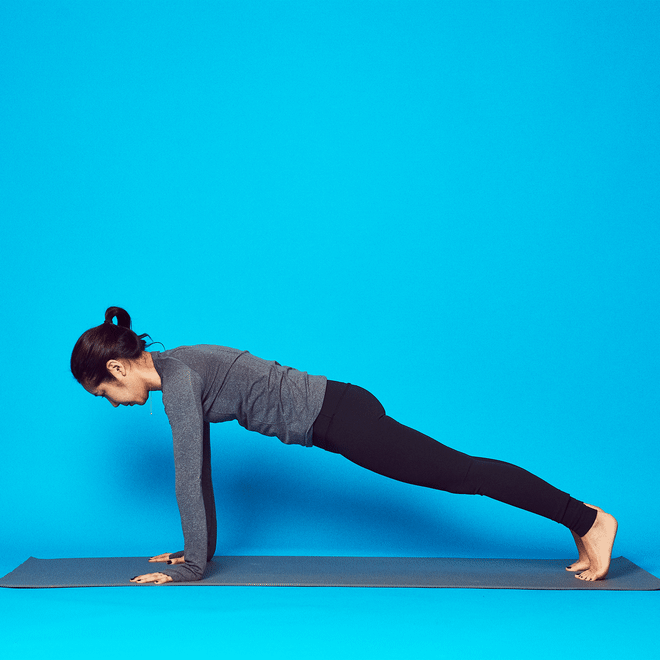
Downward Dog is a common yoga pose that can also stretch the calf muscles. To do Downward Dog:
- Get on the hands and knees, with the hands directly under the shoulders and the knees under the hips.
- Walk the feet back so that the body is in a plank position with the arms straight.
- Slowly bring the hips up toward the ceiling so that the body creates the shape of an upside-down V. Keep the arms straight, with the elbows next to the ears and the palms on the floor.
- Keep the head, neck, and back in a straight line.
- Press the heels down toward the floor and hold.
- Slowly lower the hips back down and return to hands and knees.
9. Ankle mobility heel lifts
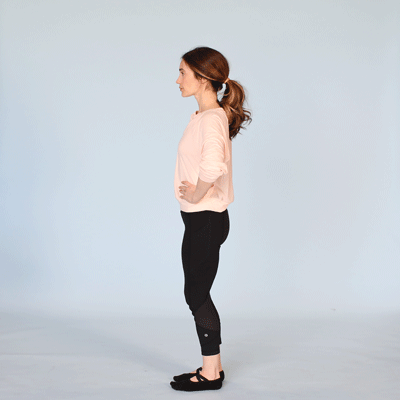
The ankles work hard while a person is running to stabilize the feet and propel the body forward. However, these small joints are also prone to injuries, such as strains and sprains. People can improve ankle mobility with this stretch:
- Stand with the back straight.
- Slowly rise up onto the balls of the feet, taking care not to lock the knees.
- Hold for 10 seconds.
- Lower the heels back down to the floor.
- Repeat the exercise 3 times.
10. Seated twist
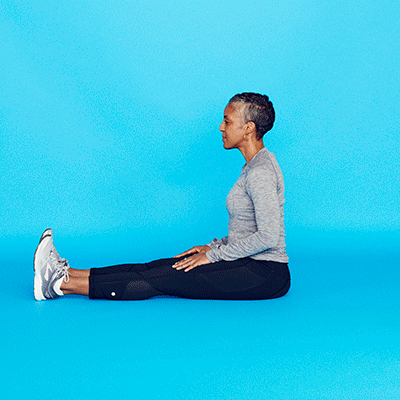
The gluteal muscles are large and strong. People use them while running, climbing, and standing up from a seated position.
Having strong muscles in the buttocks may help support the leg muscles during a run.
The seated twist stretch works the muscles in the back of the thigh and the buttock. To do this stretch:
- Sit on a mat and stretch the legs out in front of the body.
- Bring the left leg over the right leg and place the left foot on the floor, bending the left knee.
- Twist to the left and use the right arm to press the left knee gently inward.
- Hold for 30 seconds.
- Untwist and repeat on the other side
Preventing common running injuries
Any exercise — including running — can pose an injury risk. Taking some precautions can help people prevent injuries:
- Ease into running. When people start incorporating running into their exercise regimen, they sometimes run too often or too far initially, which can put them at a higher risk of stress fractures. In runners, up to 20% of musculoskeletal injuries are stress fractures. It is important to increase the distance, frequency, and intensity of running gradually.
- Wear proper running shoes. Running can be hard on the feet, especially if the person is running on pavement. People should purchase quality shoes that are comfortable and that manufacturers have designed specifically for running. The general advice is to replace them every 300 to 500 miles or before they start to look worn.
- Warm up. Do some brisk walking and gradually speed up to a jog. Work up to the desired running speed after the muscles are warm.
Summary
Stretching may help improve flexibility and prevent pain and stiffness. It can be helpful to do gentle stretching after a run to reduce soreness and tight muscles.
Runners should be sure to stretch all muscle groups in the legs, hips, and lower back. Anyone starting a new fitness regimen should speak to a healthcare professional.
